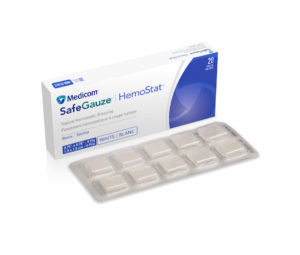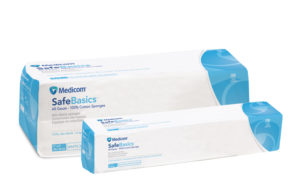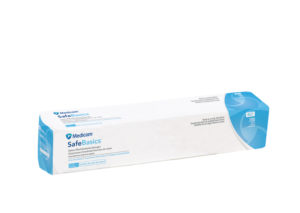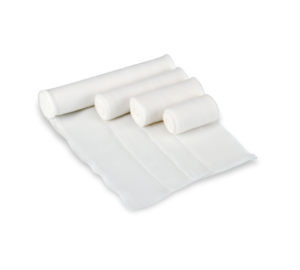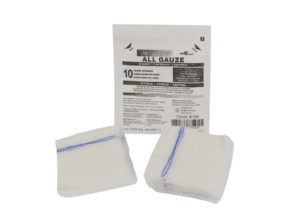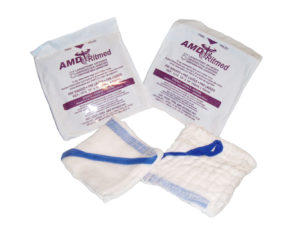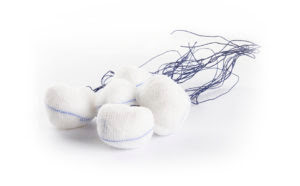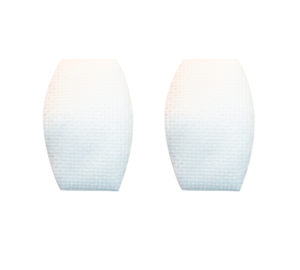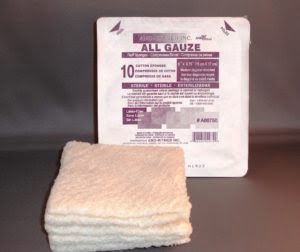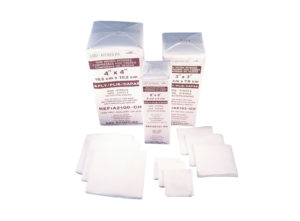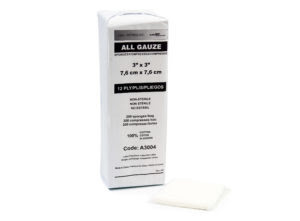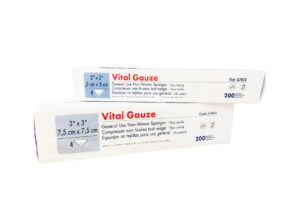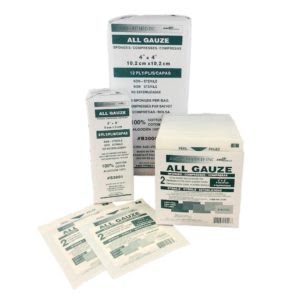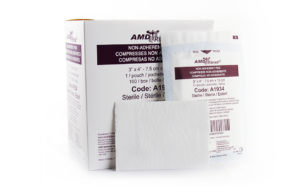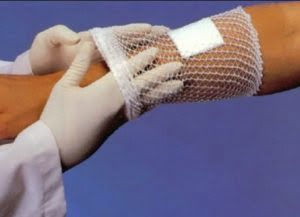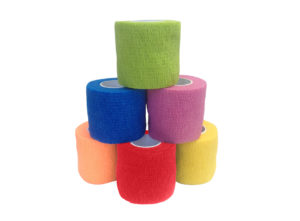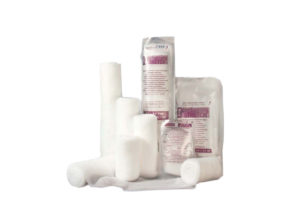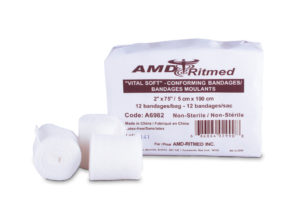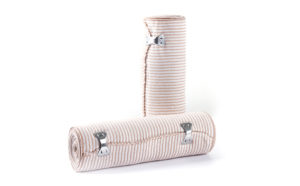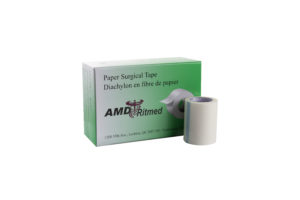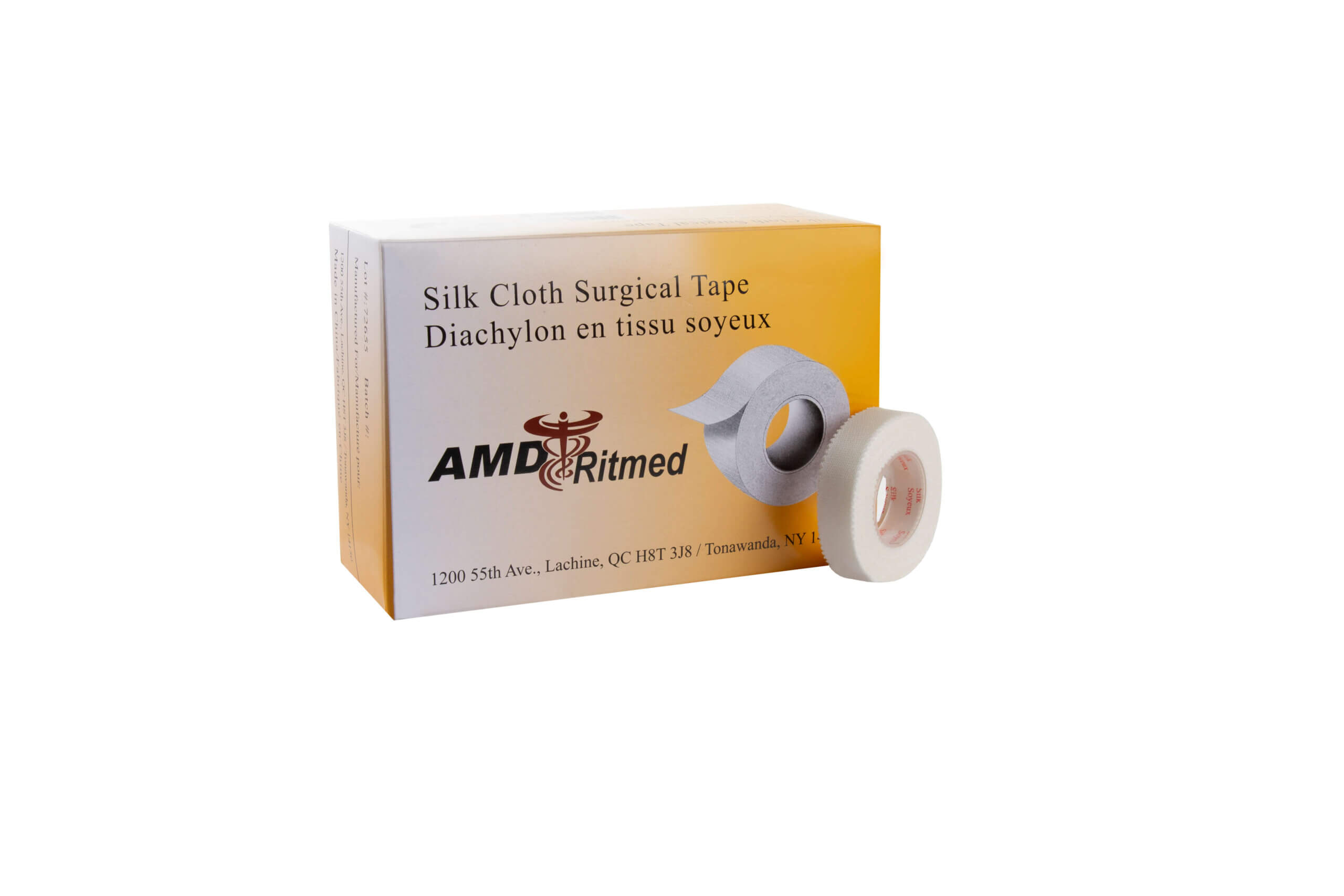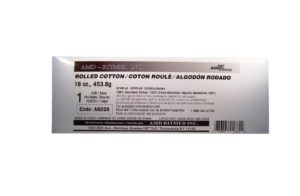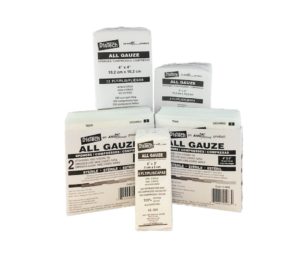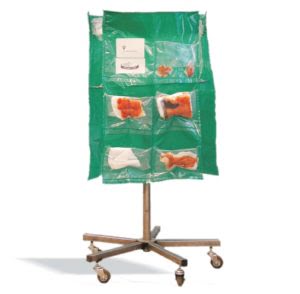All Wound Care (52 products)

Learn More about Gauze
Gauze sponges are disposable medical supplies commonly used in medicine and surgery. Despite the name they are not “sponges” as most of us understand the word. They are layers of material, and they are referred to as a “sponge” to reflect their ability to absorb fluids.
Gauze sponges have a long history and were ordinarily made of cotton. Their main use was to absorb fluids such as blood, as well as to clean and cover wounds. Typically, when used in surgery, they are referred to as surgical sponges.
Gauze has evolved over the years and there are some basic characteristics that identify and differentiate them. They come in a variety of sizes and shapes, plies (layers) and material compositions and can be sterile or non-sterile.
The earliest gauze sponges were composed of cotton threads that were loosely woven together, similar to a cloth. Later, synthetic “non-woven” gauze sponges were introduced.
Today, gauze sponges come in two main varieties: woven or non-woven. Woven sponges are always made from cotton, whereas non-woven sponges can be made from cotton or synthetic blends.
Key Characteristics When Choosing Woven or Non-woven Gauze
| Characteristics | |
|---|---|
| Material | The material used to create the gauze will determine if it is woven or non-woven. |
| Composition | The construction of a gauze is dependent on the material used. |
| Quality | The quality of woven products is determined by both thread count and thread thickness. The thread count is represented by two numbers (vertical and horizontal) as 20:12 (19:11) or 18:9 and can go as low as 16:7. Thread thickness is measured by gage. The quality of the non-woven products is determined by the gram weight. |
| Size | The size required is based on the application for which the gauze will be used. Both woven and non-woven variations are available in multiple sizes. It is NOT recommended to cut any gauze to size, as this causes linting and fine particles that can enter a wound site. |
| Layers | The layers in a piece of gauze are created by folding the fabric. |
| Sterility & packaging | Both woven and non-woven gauze are available in sterile and non-sterile format. Packaging is dependent on the sterility of the product. Non-Sterile gauze comes in a sleeve, bag, or package and indexed. Sterile gauze is packaged in a sealed protective pouch (usually containing 1, 2, 5 or 10 sponges/pouch) or supplied in a box or tray for easy use in a sterile environment. Sponges may be indexed or not. |
Key Differentiators Between Woven and Non-woven Gauze Sponges
| Key differentiators | Woven Cotton Gauze | Non-Woven Gauze |
|---|---|---|
| Material | Made solely of cotton. Completely biodegradable. | Made typically from synthetic blends of polyester (for strength) and rayon (for softness and absorbency). Polyester is not biodegradable. |
| Composition | Composed of a weave of loose mesh threads that are layered. | They are made from fibers that are pressed together to resemble a weave but are not actually woven together. |
| Quality | Thread Count: The more threads used in the weave, the higher the quality of the gauze. Thread Thickness: This thickness is measured by gage and typically is 32-gage (which is thicker than 40-gage). |
Product quality is determined by the gauze weight in grams: 30, 40 and 50 grams per square meter. |
| Layers / Plies | The minimum number of plies in a woven cotton gauze is 8 and can go as high as 16 plies. | It is available in 4 and 6-ply configurations. |
Woven Gauze Sponges
| Ideal for applications where there is moisture since cotton fibers become stronger as they get wet. |
| Preferable to non-woven when used for debriding (removing damaged tissue or foreign objects from a wound) because it is less soft and more adherent. |
| The open weave design of woven cotton helps remove dead tissue from the skin’s surface and wick away fluids to help prevent maceration (softening and breaking down due to prolonged exposure to moisture) of skin tissue. |
There are a number of woven specialty products, including:
|
Non-Woven Gauze Sponges
| – Synthetic non-woven gauze is made from polyester and rayon. Because polyester is a non-absorbent fiber, its strength does not change when it is wet. |
| – This provides non-woven gauze with higher absorbency and wicking capacity than woven gauze. |
| – Non-woven gauze maintains its shape and strength longer than traditional woven gauze. |
| – Non-woven gauze absorbs and retains more fluid. For example, a 4-ply non-woven gauze sponge retains more fluid than a 12-ply woven cotton gauze sponge. |
| – Non-woven gauze is more economical because it is more absorbent and durable and therefore, one uses fewer sponges than traditional woven gauze. |
| – Non-woven gauze is lower linting than woven gauze. |



 English (US)
English (US)

